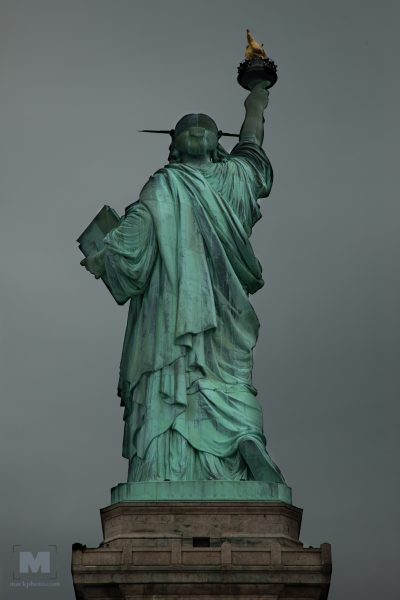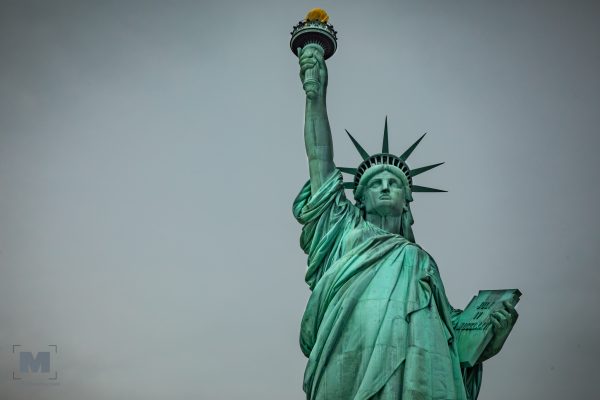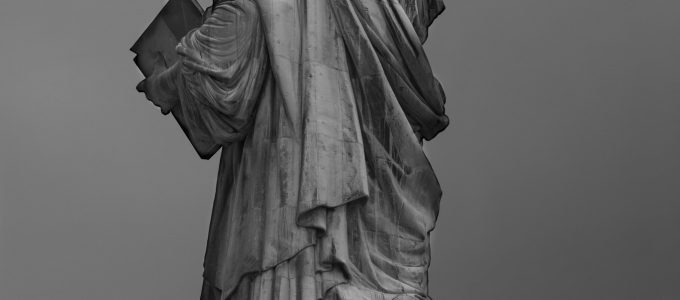I recently went to the Statue of Liberty while in New York. While it was a cold and blustery day with dark skies overhead it is always a compelling place to visit knowing that millions of people had their first glimpse of Lady Liberty as they came to this nation. I did not know what kind of shots I would get on a day like this but found closeups of the statue more compelling than further ones. While I did not have a lens longer than 105mm it was long enough to get in close enough. Had I carried my 28-300mm with me I would have been able to get even closer for interesting detail shots. Next time I won’t worry about the weight.
To me Lady Liberty stands for our nation, or at least for what I believe our nation is. One of welcoming all, caring about all, working with other nations to fix problems from climate change to nations with health, food, and education issues. We are a nation for good. Or at least we used to be. Currently some folks want to go back to an isolationist idea, turning our backs on the world. Maybe that is why I like the image from the back of Lady Liberty so much – it represents where I think some people in this country think we need to be. I disagree wholeheartedly. In many ways it is a sad image. From the front it sends the idea we still accept what the Statue of Liberty stands for – Liberty for All.


As for the images, much like Ansel Adams taught photographers, see your image before you click the shutter, know the exposure and what filters you need to get the tones you want in a black & white image. In my case I knew I would darken the sky and lighten Lady Liberty to bring out the contrast I imagined on such a gray day. It is easier with today’s digital imaging to know before hand what you want it to look like and then make it happen in the digital darkroom. Although maybe not as fun as watching a print come to life in the developer.
And the big plus is shooting in digital you get both a color and B&W version of the image! Sometimes it is very hard to decide which you like better! You go with a perceived idea and come back with some unexpected images you may like better.
Enjoy,
Richard
#richardmackphoto #NewYork #StatueofLiberty #Canon #Canon5DMarkIV #NPS




